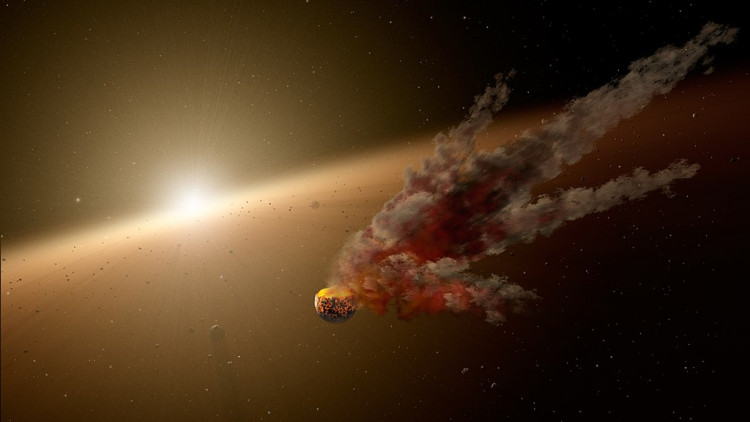Apophis-an asteroid the size of three football fields-has a slight probability of impacting Earth in 2068. Until then, though, the object is expected to zip past us in an encounter that scientists are still hoping to make use of. Here are some interesting ways in which we might explore Apophis during its next close approach in 2029.
In just nine years, the potentially hazardous asteroid 99942 Apophis will be positioned within 19,000 miles of our planet. At one-tenth of the distance between Earth and the Moon, that's a close call by any measure, and an incredibly unusual occurrence for an asteroid of this size- it's going to be visible to the naked eye. Current projections put the average width of the object at approximately 1,100 feet. The 2029 close approach is seen as a once-in-a-thousand-year chance for scientists to study an object of this magnitude as it brushes past a planet.
Indeed the gravitational stresses exerted on the asteroid during this flyby would be of considerable concern to physicists, but there is a potentially more urgent problem at stake. Apophis ranks seventh on NASA's list of potentially dangerous near-earth objects (NEOs) with a 1 in 150,000 probability of reaching Earth in 2068. Other figures bring the chances closer to 1 in 530,000, but nonetheless, Apophis poses a possible catastrophic threat.
If Apophis had smashed into Earth, it would have caused an average of 1,150 megatons of TNT, 3,800 times more powerful than the atomic bomb exploded over Hiroshima. The 2029 Close Approach thus provides a crucially critical opportunity to research this asteroid in more depth so that scientists can better determine its risk potential. What's more, the test could act as a practice run if we were to detect an entity much more terrifying than Apophis one day.
With all this in mind, the Lunar and Planetary Institute recently held a virtual workshop called "Apophis T-9 Years: Knowledge Opportunities for the Science of Planetary Defense." The workshop, which lasted from November 4 to 6, featured approximately 200 participants and specialists in asteroids, astrophysics, radar astronomy, robotics, and engineering. The goal of the conference was to put together like-minded people to discuss the different ways in which we could explore Apophis in 2029.
A collaborative European-NASA mission will also measure and study asteroid deflection in space rock named Didymos, beginning in 2022. If all goes to schedule, NASA's Double Asteroid Redirection Test (DART) spacecraft will slam "Didymoon," the moon orbiting Didymos. The European Space Agency would then begin the Hera mission in 2023 or 2024 to enter Didymos two years later to see how far the kinetic impactor was able to shift the moon from its previous orbit.
NASA has a dedicated Planetary Defense Coordination Office, which receives asteroid observations from a network of partner telescopes, and which conducts simulations with other U.S. organizations for asteroid deflection or in the worst case) evacuation of threatened people from the incoming space rock. So far, decades of experiments have detected no immediate danger to our world from asteroids or comets.




